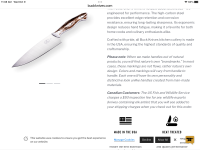I’ve been hoping someine would spell out how to obtain a CITES certificate because despite my best efforts to find outCITES regulations for ivory is easy to find and what country you are in is pretty irrelevant. It's a world wide set of regulations. I know that within USA ivory rules varies a bit from state to state, but generally speaking ivory is not worth the added risk is poses in terms of fines and confiscation. Ivory is also easy to detect and it's one of the things customs have a big focus on.
and obtain one, or at least apply for CITES, I haven’t discovered which agency has responsibility or how to obtain any
CITES documentation. I called the Dept. of the Interior in Washington, DC., spoke with two Congressmen from CA and
CA Fish & Wildlife. I couldn’t get any information or assistance in finding out what to do or apply for a CITES certificate.
Does any Az readers actually have a recent , or current, CITES certificate they can post a photo or explain exactly how
they got theirs and what specific steps are required. In all the intervening years since the Ivory ban was enacted by
various states, nothing has been written explaining what to do to get a CITES certificate. Anyone got some information?
